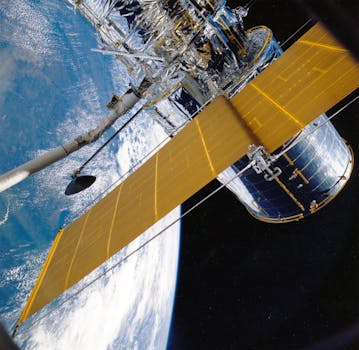
Beyond Earth: How Recent Advances in Satellite Tech are Shaping Global Communications
Beyond Earth: How Recent Advances in Satellite Tech are Shaping Global Communications. The world of satellite technology has witnessed significant advancements in recent years, transforming the way we communicate globally. With the launch of new satellite constellations and the development of cutting-edge technologies, the possibilities for global connectivity have expanded exponentially. In this article, we will delve into the recent advances in satellite tech and their impact on global communications.
Introduction to Satellite Technology
Satellite technology has been around for decades, with the first artificial satellite, Sputnik, launched by the Soviet Union in 1957. Since then, satellites have played a crucial role in global communications, navigation, and weather forecasting. However, the traditional satellite technology had its limitations, such as high latency, limited bandwidth, and high costs. The recent advances in satellite tech have addressed these limitations, paving the way for a new era of global communications.
Recent Advances in Satellite Tech
Several recent developments have contributed to the transformation of satellite technology. One of the most significant advancements is the launch of new satellite constellations, such as SpaceX’s Starlink and Amazon’s Kuiper Systems. These constellations comprise thousands of small satellites in low Earth orbit (LEO), which provide faster and more reliable connections compared to traditional geostationary satellites. Another significant development is the use of advanced materials and technologies, such as phased arrays and beamforming, which enable satellites to transmit and receive data more efficiently.
Impact on Global Communications
The recent advances in satellite tech have far-reaching implications for global communications. With the increased availability of satellite-based internet services, people in remote and underserved areas can now access high-speed internet, bridging the digital divide. Satellite technology also enables the creation of emergency response systems, such as satellite-based backup networks for disaster relief and search and rescue operations. Furthermore, the improved connectivity provided by satellite technology facilitates global commerce, education, and healthcare, fostering economic growth and social development.
Future of Satellite Technology
As satellite technology continues to evolve, we can expect even more innovative applications and services. The integration of satellite technology with other emerging technologies, such as 5G and the Internet of Things (IoT), will enable new use cases, such as smart cities and autonomous vehicles. The future of satellite technology also holds promise for deep space exploration, with satellites playing a critical role in establishing a human presence on the Moon and Mars.




